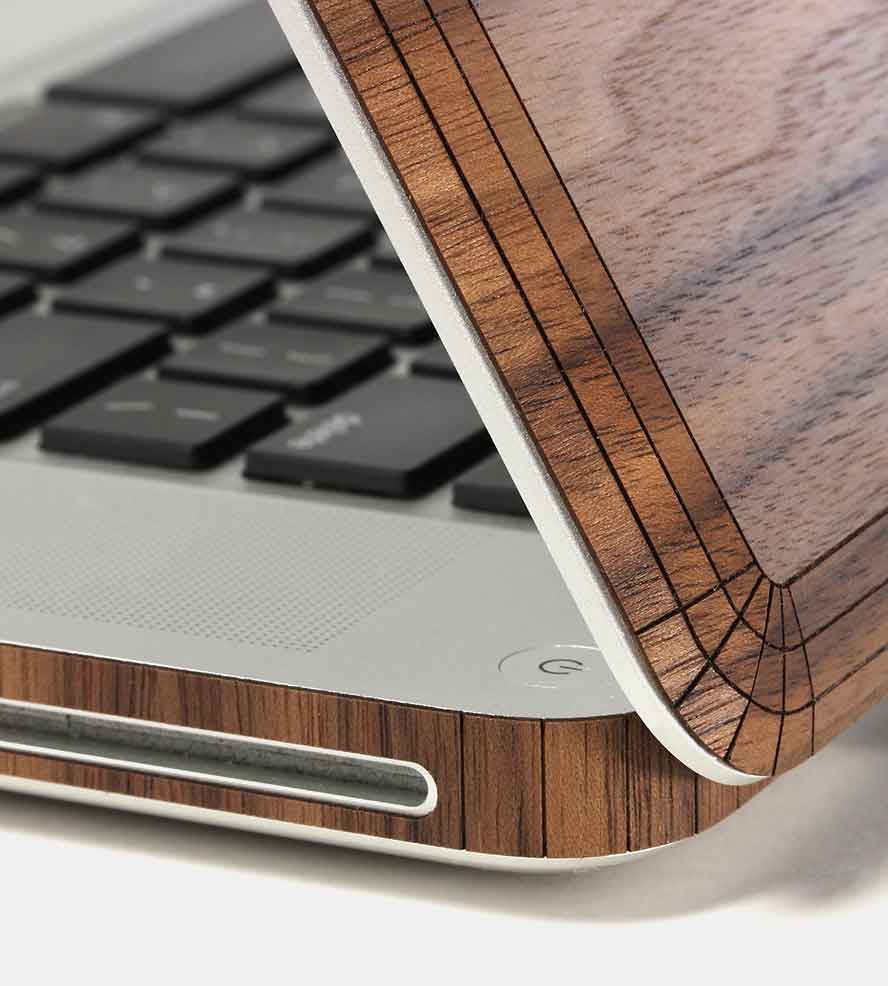What are the benefits and drawbacks of enveloping your MacBook or Windows laptop in wood paneling?
Formerly a relatively small niche market, wood paneling for laptops and other devices, has made its way into to larger numbers of consumers, looking to make their favorite devices stand out, and be more personalized.

Wood is the perfect material for this type of customizations, for a variety of reasons. Wood is cheap, easy to come by, it needs no additional texturing, and depending on how it’s cut, or what plant it comes from, wood has hundreds, even thousands different individual looks and styles.
Manufacturers of these types of accessories have multiplied in recent years, most of which competing to offer the most appealing solution to protect Apple MacBooks, Microsoft Surface Pro, Surface Book, and a wide range of other, predominantly mobile, consumer devices.
Last month we talked about one of these manufacturers in particular. Toast, with its home base in Portland, OR, has managed to develop the most intricate, and comprehensive methods to completely cover in wood virtually anything, from laptops, to gaming consoles, as well as smartphones and tablets. The result is quite stunning, especially for devices as complex as the Surface Book, on which wood covers have also been applied to each link of the flexible hinge connecting the base to the detachable display/tablet.
Much like Toast, UK based Recombu and Cover-Up, Switzerland based Glitty, Germany-based Wood Soul, and USA based Woodchuck, are all catering to a growing audience of device owners interested in this type of customization.
With that said, we suddenly started thinking whether or not these covers bring a benefit to laptops, beyond protecting the device from scratches. At the same time, what possible drawbacks are there, when using these covers?
As mentioned previously, the obvious advantage that comes from using these covers, is that the delicate, shiny surface of any clamshell device, will no longer be directly in contact with other harsh surfaces, which avoids the chances of scratching up a brand new laptop.
For those worried about the core temperature of devices covered in wood, good news! The typical thickness of these covers is barely enough to provide a great embossed look, with no evidence of it contributing to higher core temperatures on laptops or tablets, when in use. Also, these covers are designed with cutouts allowing for normal ventilation. Devices like the MacBook Pro, for instance, are built inside a unibody clamshell of anodized aluminum, which functions as a giant heatsink, evenly dissipating internal heat from the logic board.
Some have also raised the concern on overall weight of the finished product, however, also on this front, most covers are extremely thin, and light, and they would have to be, in order to properly adhere atop the device.
Finally, some consumers may wonder whether the glue used to attach the wood covers onto MacBooks and other devices, can damage the aluminum of the laptop itself. Once again, there is no proof that these types of adhesive can damage a laptop’s exterior. With that said, it’s also helpful to check with the manufacturer if there are any warnings that come with the kit provided, and there may be liability waivers to keep an eye on, before starting to plaster a device in wood, or any other custom material requiring strong adhesive.
Aside from this last point, there are no known drawbacks, to the customization of devices with these types of products, as long as assembly instructions are followed to the letter.